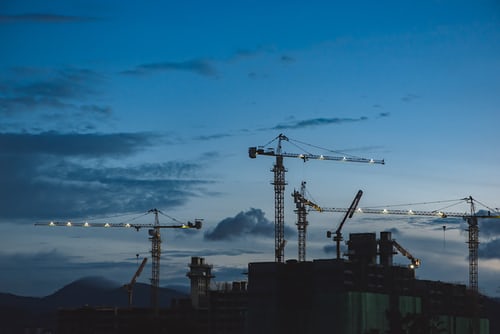The bright future of construction technology trends – The construction industry is both incredibly innovative and competitive. This means that one’s ability to keep up with all the latest trends may determine their survival rate. However, not every trend is viable in every niche and while there are some ideas that will become huge in the future, this definitely doesn’t apply to every new occurrence in the industry.

Still, here are the top six construction technology trends that might become huge in 2020 and stay relevant in the future, as well.
1. Prefabricated construction

One of the most difficult things about construction is the fact that you can never really anticipate what the situation on the construction site will be. The number of rainy days, the accessibility of the site or the inability to properly set a work platform due to some structural/landmark-based features of the terrain can make things quite difficult. This also means that the duration of the process can stretch out indefinitely. With prefabricated construction, all that the on-spot crew does is tend to the assembly of prefabricated elements. This speeds up things by quite a bit.
2. Augmented reality technology
Another thing you need to understand is the importance of augmented reality technology in the construction industry. Regardless of how accurate a 3D model is, sometimes the immersion into what the end result would look like is quite difficult to achieve. Here, augmented reality technology can be quite useful. Instead of having to wait for the completion of the project, you have the privilege of getting to see what the end result will look like via your smartphone or your tablet screen. This, at least, is a tool that everyone on the construction site possesses.
3. Specialized services

One of the trends that give consistently best results in the field of construction is the concept of outsourcing various specialized tasks to specialized agencies. In other words, a general constructor might decide to hire an agency specialized in concrete and construction tools in order to ensure that this part of the job is completed with the greatest possible level of competence. With tools and technology such as a laser level, the end result will be far superior to anything that a crew hired by a general contractor (even a seasoned crew) could create.
4. 3D scanning
The majority of construction software nowadays specializes in 3D modeling. Due to the fact that the majority of these tools can be integrated with other tools (like Google Earth for better positioning on the property grid), with the help of 3D scanning, you can achieve much greater precision. The best thing about this is the fact that the majority of these tools also tend to be cloud-based, which is why the information sharing between them works so seamlessly. This is also great for the on-spot crew, due to the fact that both the contractor and the foreman can access this data via their smartphone.
5. 3D printer

Regardless if it still hasn’t reached its full potential, the use of a 3D printer in the construction industry is definitely one of the most impressive technological marvels of today. Why? Well, because a specialized 3D printer can make a full-sized tiny house in about 20 hours. This means that you can see a 3D model of your home today and have the place move-in ready in a matter of days and weeks. Keep in mind that setting this printer takes a while, as well as that it isn’t an easy task to find a company that offers these services. For the most part, these giant printers are still in the prototype stage.
6. Internet of things
One should never underestimate the importance of analytics. This is why the Internet of Things (IoT) might make such a revolutionary change in the construction industry. Not only will it send more accurate feedback regarding the behavior and performance of certain equipment pieces and materials but also lay out the groundwork for their improvement. The problem with human assessment lies in the fact that it A) tends to be quite subjective and B) rests on a relatively small number of test samples. With the IoT and hyper-connectivity of items to a single global network, we’ll finally be able to completely solve this problem.
Lastly, this is just the tip of the iceberg when it comes to all innovation in the field of construction. Other than this, there are new tools and improvements made on old tools. Also, there are new materials and new construction practices (often in agreement with the latest policies and regulations) that are emerging on a daily basis. For any construction to remain relevant and competitive, it is essential to manage to keep up with the progress.
